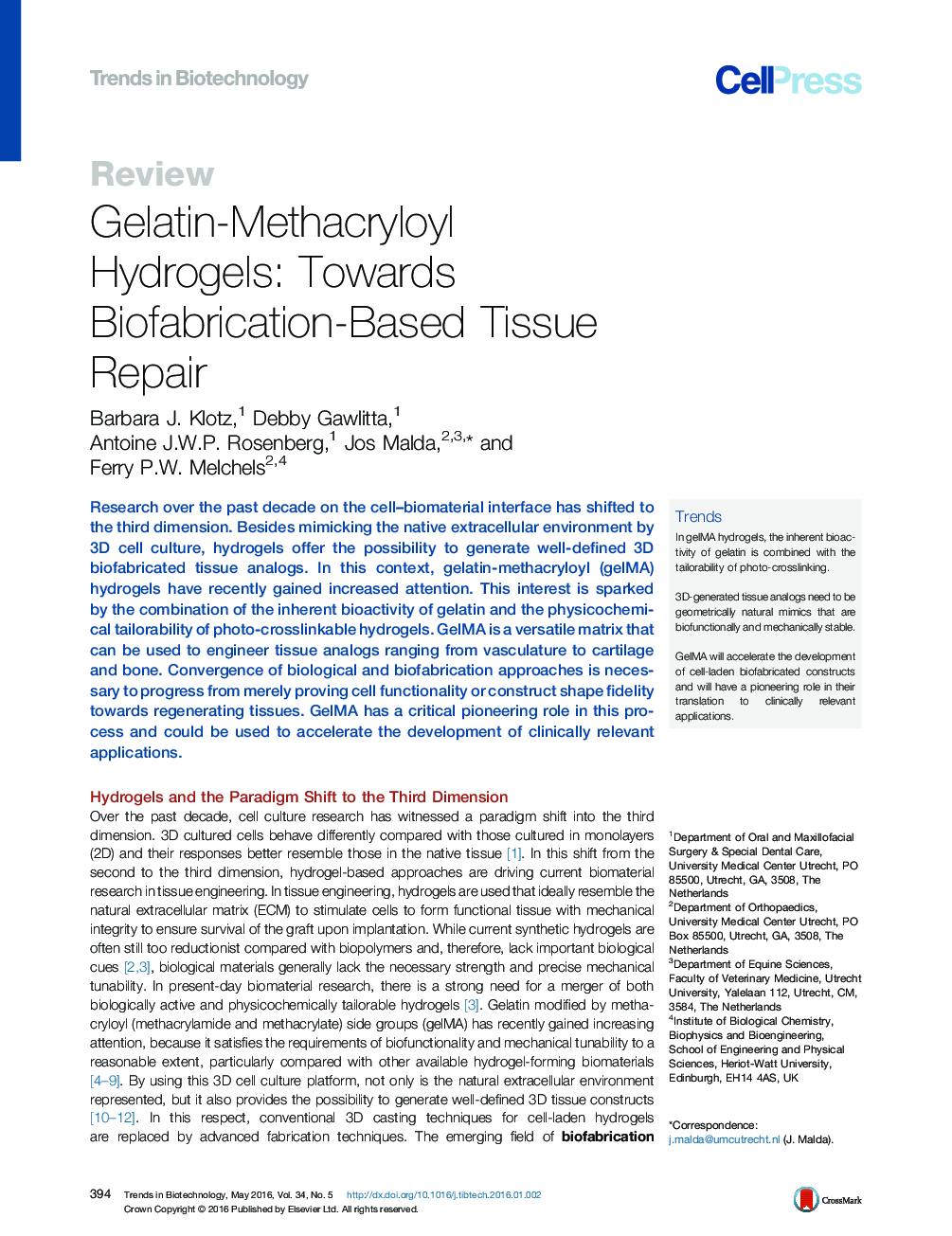| Article ID | Journal | Published Year | Pages | File Type |
|---|---|---|---|---|
| 36864 | Trends in Biotechnology | 2016 | 14 Pages |
Research over the past decade on the cell–biomaterial interface has shifted to the third dimension. Besides mimicking the native extracellular environment by 3D cell culture, hydrogels offer the possibility to generate well-defined 3D biofabricated tissue analogs. In this context, gelatin-methacryloyl (gelMA) hydrogels have recently gained increased attention. This interest is sparked by the combination of the inherent bioactivity of gelatin and the physicochemical tailorability of photo-crosslinkable hydrogels. GelMA is a versatile matrix that can be used to engineer tissue analogs ranging from vasculature to cartilage and bone. Convergence of biological and biofabrication approaches is necessary to progress from merely proving cell functionality or construct shape fidelity towards regenerating tissues. GelMA has a critical pioneering role in this process and could be used to accelerate the development of clinically relevant applications.
TrendsIn gelMA hydrogels, the inherent bioactivity of gelatin is combined with the tailorability of photo-crosslinking.3D-generated tissue analogs need to be geometrically natural mimics that are biofunctionally and mechanically stable.GelMA will accelerate the development of cell-laden biofabricated constructs and will have a pioneering role in their translation to clinically relevant applications.
